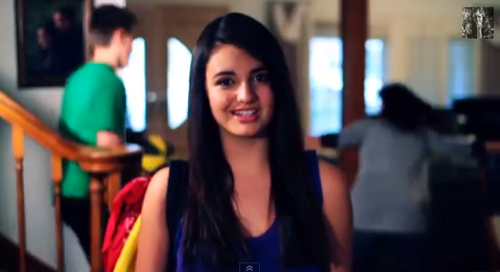There is a fundamental shift in the star-making machinery in Hollywood that pumps out teen celebrities. They are no longer coming from studio creations like “The Mickey Mouse Club” that launched the careers of Justin Timberlake and Britney Spears. Instead, they’re on YouTube.
No one can attest to that quite like Disney, which is betting big on viral stars not just to draw view but to build its next-generation franchises that it can promote on cable channels, theme parks, and more. The Walt Disney Co. is acquiring Maker Studios, one of YouTube’s largest video production networks for $500 million, Reuters reported on Monday. (That number could increase to as much as $950 million if Maker hits designated performance milestones.)
Its sale to Disney will likely hearten YouTube creators who, in recent years, have grown unsure of the economy the Google-owned video site has built around them.
See also: The YouTube Economy Is In Peril
Maker Studios produces and distributes videos for a viewership of millennials—those who came of age around the year 2000, four years after “The Mickey Mouse Club” went off the air. Its channels attract more than 4.5 billion monthly views and collectively have more than 340 million monthly subscribers.
Those are numbers that put most broadcast and cable operations to shame—yet Maker and other YouTube operators have struggled to make their stars household names. That’s where Hollywood’s hitmakers can help.
From “YouTube Famous” To Just Plain Famous
Gone are the days when stars like Christina Aguilera had to make it through grueling auditions. Now people can become viral celebrities virtually overnight, and thanks to YouTube’s system of channels, subscriptions, and revenue-sharing, turn those millions of fans into a lasting following that makes some of them millions.
Now that new star system is tying up with a traditional media company. And the Disney-Maker Studios deal won’t likely be the last of its kind.
So who are these celebrities of the future? Take a look at some of the people whose careers have launched on YouTube.
PewDiePie

Felix Kjellberg, a 24-year-old Swedish videogame commentator, is YouTube’s biggest star, with 25 million subscribers. Maker Studios represents PewDiePie, as Kjellberg’s known on YouTube. While he’s not an old-media celebrity, his recommendations can instantly boost a game’s sales.
Justin Bieber

It’s easy to forget that the crooning Canadian has his roots on YouTube. At 12, he began posting videos of himself singing. Record labels soon discovered him and launched him into stardom.He’s since made history bypassing 3 billion viewson his YouTube channel. Bieber’s the kind of futurecelebrity Disney hopes to own.
Michelle Phan

In 2007, Michelle Phan posted a video tutorial on makeup, and since then has become not only a YouTube phenomenon, but a much-cited cosmetics expert. By using YouTube to become one of the Internet’s most popular beauty insiders, she eventually created her own online-video network called FAWN (For All Women Network) and a beauty social networking site. She also teamed up with L’Oreal to launch her own makeup line.
She has more than 6 million subscribers and is one of the most popular female YouTubers.
Fred Figglehorn

Actor Lucas Cruikshank created the Fred video series as a teenager that centers around an annoying, dysfunctional 6-year-old boy named Fred Figglehorn. Though he describes his videos as “programming for kids by kids,” the storyline highlights serious issues children face growing up.
The video series was so popular that Nickelodeon picked it up for three movies and 24 episodes of “Fred: The Show.”
Rebecca Black

“Friday,” one of the worst songs ever made, immediately became a classic YouTube hit, with more than 66 million views. Since that infamous day, Rebecca Black has taken her YouTube talents to television, with appearances on The Tonight Show with Jay Leno and a cameo in a Katy Perry music video.
Her follow-up song, “Saturday,” was dubbed “a totally passable piece of Radio Disney-esque pop” by Billboard magazine.
Who’s Next?
What these stars’ crossover appeal tells us is that the YouTube audience can now determine what’s popular not just online, but offline as well. What Disney has bought isn’t just a stable of YouTube channels: It’s a next-generation talent-discovery machine that can fuel all of its entertainment properties.
Images via YouTube
















